Crystal structure - kessho kozou (English spelling) crystal structure
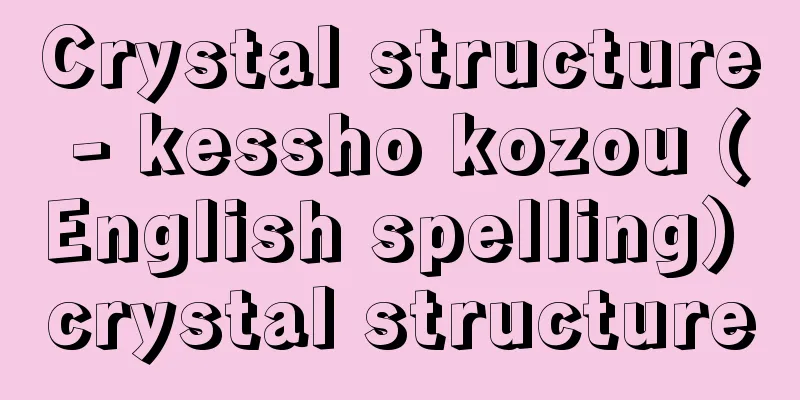
|
The arrangement of atoms in a crystal lattice. In addition to single crystal X-ray diffraction, neutron diffraction, electron diffraction, powder X-ray diffraction, etc. are used to determine crystal structure, and nuclear magnetic resonance spectroscopy, infrared and Raman spectroscopy, Mössbauer spectroscopy, and nuclear quadrupole resonance spectroscopy may also be used as supplementary methods. Crystal structure is basically indicated by the crystal system, crystal class (point group), or space group of the unit cell, lattice constant, and atomic coordinates within the unit cell. In real crystals, each atom is thermally vibrating, so a temperature factor indicating the degree of thermal vibration is often indicated along with the atomic coordinates. With the advancement of measurement and analysis techniques, the number of reports on crystal structure analysis is increasing explosively, but still, compared to the number of types of crystalline substances currently known, the number of reports is still insignificant. There are still not enough reports accumulated to systematically classify the crystal structures of complex organic compounds, complexes, proteins, etc. [Shinmyo Iwamoto, August 19, 2015] Classification of crystal structures of inorganic compoundsMany typical crystal structures are known for inorganic compounds with relatively small unit cells and simple compositions, and these structures are classified into types named after typical compounds or minerals. [Shinmyo Iwamoto, August 19, 2015] Structure of a binary compound with composition AX (A is an electropositive element and X is an electronegative element)There are sodium chloride (rock salt) type, cesium chloride type, zinc blende type, wurtzite type, nickel arsenide type, palladium oxide type, etc. The differences in their structures are thought to be caused by differences in the ionic radius ratio and the degree of the effect of covalent bonding on the bonds. Although the sodium chloride type ( (1)) and the cesium chloride type ( (2)) are both chlorides of cations belonging to the same alkali metal, they do not have the same structure because the ionic radius of the cesium ion is larger than that of the sodium ion. In the sodium chloride type, the sodium ion fits into the octahedral 6-coordinate position that occurs in the face-centered cubic lattice formed by the chloride ions, but the cesium ion is too large to fit into this position. In the cesium ion, the coordination number increases to 8, and it fits into the cubic 8-coordinate position that occurs in the simple cubic lattice formed by the chloride ions. Both zinc blende ( (3)) and wurtzite ( (4)) are minerals whose main component is zinc sulfide ZnS, but in the former, the sulfide ions form a face-centered cubic lattice, while in the latter, they form a hexagonal lattice, with zinc ions in each tetrahedral four-coordinate position. The radius ratio of zinc ions to sulfide ions is smaller than that of alkali halides. In the case of zinc sulfide, the zinc blende type is stable at room temperature, while the wurtzite type is stable at high temperatures. In addition, the degree of polarization of anions by cations becomes larger, and it is thought that the contribution of covalent bonding is also large. In the nickel arsenide type ( (5)), electronegative arsenic atoms form a hexagonal lattice, with electropositive nickel atoms occupying the octahedral 6-coordinate positions. The distance between nickel atoms, 2.51 Å, is twice that in metallic crystals, but the crystalline nature is covalent or metallic. In the palladium oxide type (PdO), the directionality of the bonds becomes more pronounced, and the contribution of covalent (coordinate) bonds is also large. In the tetragonal unit cell, the palladium ion is surrounded by four oxide ions in a square planar four-coordinate structure, but conversely, the oxide ion is surrounded by four palladium ions in a tetrahedral four-coordinate structure. Among binary compounds with strong covalent bonds, there are those with a zinc blende structure similar to the diamond structure ( ), as well as those with a layered structure similar to graphite, such as boron nitride (BN). [Shinmyo Iwamoto, August 19, 2015] Structure of AX2 type compoundsThese include fluorite type (CaF 2 ), rutile type (TiO 2 ), cristobalite type (SiO 2 ), cadmium iodide type (CdI 2 ), and lead(II) chloride type (PbCl 2 ). In the fluorite type ( (1)), calcium ions form a face-centered cubic lattice, with fluoride ions at all tetrahedrally coordinated positions. Conversely, calcium ions are located at the center of the simple cubic structure formed by fluoride ions. The rutile type belongs to a tetragonal crystal system with a 42- spiral axis, but titanium ions are octahedrally coordinated by six oxide ions, with one oxide ion coordinated to three titanium ions. In the cristobalite type ( (2)), silicon atoms occupy the same positions as carbon atoms in the diamond structure, and oxygen atoms are located at the midpoints of the lines connecting each silicon atom tetrahedrally, forming a three-dimensional structure by covalent bonds. In the cadmium iodide structure ( (3)), the iodide ions are arranged in a nearly hexagonal close-packed structure, and the cadmium ions are accommodated in the octahedral six-coordinate positions between the layers, but they are accommodated in alternating layers, resulting in a layered structure of anion-yang-yin-yin-yin-yin-yin-yin ion layers. Therefore, cleavage easily occurs between the layers where the anions are in contact, and the bond between the cadmium ions and the iodide ions becomes more covalent. In lead(II) chloride, the lead ion is coordinated by nine chloride ions in a square-capped trigonal prismatic shape, and the Pb-Cl interatomic distance is covalent and highly disproportionate. As shown above, even inorganic compounds with compositions that appear to be ionic crystals can have a variety of structures depending on the combination of constituent atoms. [Shinmyo Iwamoto, August 19, 2015] Other crystal structuresTo give an example limited to oxides, rhenium oxide (Ⅵ) ReO3 , an AO3 type oxide, has a three-dimensional structure in which regular octahedral ReO6 units with O at the vertices share their vertices to form a simple cubic lattice ( (1)). In tungsten oxide (Ⅵ) WO3 , this structure is distorted, resulting in a monoclinic crystal system. In the oxide of molybdenum, MO3 , which is in the same family as tungsten, distorted MoO6 octahedral units form a two-dimensional layered structure in which they share edges or vertices, and the crystal is an orthorhombic (rectangular) crystal system with a layered structure. An example of an ABO 3 type oxide is perovskite (perovskite) type structure ( (2)). Perovskite is a double oxide mineral with the main component CaTiO 3 , in which the A cations with a large ionic radius (calcium in this case) form a simple cubic lattice, with oxide ions at the face centers and the B cations with a small ionic radius (titanium) at the center of the cube. The ideal structure would be a cubic system, but in actual compounds, many are distorted to tetragonal, trigonal, or orthorhombic (rectangular) systems. In perovskite, A is a divalent cation and B is a tetravalent cation, but there are also known examples of this structure in combinations where A is a monovalent cation and B is a pentavalent cation. Spinel, a typical example of an AB 2 O 4 type oxide, is a mineral whose main component is MgAl 2 O 4 and belongs to the cubic crystal system ( (3)). The unit cell has a volume equivalent to eight face-centered cubic lattices of oxide ions, with two units each connected in the a , b , and c directions, and contains eight formula units. The origin is placed at the position of a regular tetrahedral four-coordinate system of oxide ions, and magnesium ions are placed at eight positions equivalent to the origin. Aluminum ions are placed at positions of a regular octahedral six-coordinate system (1/4, 1/4, 1/8), and are placed at 16 equivalent positions. There are many examples of this type of structure formed by a combination of divalent A ions and trivalent B ions, but there are also inverse spinel structures in which half of the B ions (eight ions) are placed at the A position of spinel, and the remaining B and A are placed at the B position, and disordered spinel structures in which A and B are placed in a disordered manner. What is generally called ferrite is a compound oxide of the MFe 2 O 4 type, which becomes ferromagnetic when it forms an inverse spinel structure in which half of the iron(III) ions are in the A position of the spinel. An example of a special crystal structure is an inclusion compound. An inclusion compound is a compound that is formed when a main structure called a host creates a cage-like or tunnel-like space, and a relatively small molecule called a guest fits into that space. However, there is no strong chemical bond between the host and guest, and the compound can only be formed when the dimensions and shape of the space and the molecule match. [Shinmyo Iwamoto, August 19, 2015] "Inorganic Chemical Structures" by Ryoichi Kiriyama (1978, Iwanami Shoten) [References] | | | | | | | | | | |©Shogakukan "> Typical crystal structure example (AX type compound) [... ©Shogakukan "> A typical example of a crystal structure (diamond structure) ©Shogakukan "> Typical crystal structure example (AX type compound) [... ©Shogakukan "> Examples of typical crystal structures (other crystal structures... Source: Shogakukan Encyclopedia Nipponica About Encyclopedia Nipponica Information | Legend |
|
結晶格子での原子の配列。結晶構造の決定には、単結晶X線回折法のほか、中性子線回折法、電子線回折法、粉末X線回折法なども利用され、核磁気共鳴吸収法、赤外・ラマン分光法、メスバウアー分光法、核四重極共鳴吸収法なども補助的に利用されることがある。結晶構造は、その結晶の属する晶系、晶族(点群)、あるいは単位胞の空間群、格子定数ならびに単位胞内の原子座標によって基本的に示される。現実の結晶では、各原子は熱振動しているので、その程度を示す温度因子も原子座標とともに示されることが多い。 測定および解析技術の進歩によって、結晶構造解析に関する報告例は爆発的に増加しつつあるが、それでも、現在知られている結晶性物質の種類の数に比べれば、微々たるものである。複雑な有機化合物、錯体、タンパク質などの結晶構造を系統的に分類するには、まだ十分な数の報告例が蓄積されているとはいえない状況にある。 [岩本振武 2015年8月19日] 無機化合物の結晶構造の分類単位胞が比較的小さく、組成も複雑ではない無機化合物については、多くの典型的結晶構造が知られており、その典型例となる化合物あるいは鉱物の名を冠した構造の型が分類されている。 [岩本振武 2015年8月19日] 組成AX(Aは陽性元素、Xは陰性元素)となる二元化合物の構造塩化ナトリウム(岩塩)型、塩化セシウム型、閃(せん)亜鉛鉱型、ウルツ鉱(繊維亜鉛鉱)型、ヒ化ニッケル型、酸化パラジウム型などがある。それらにおける構造の差異は、イオン半径比や結合に及ぼす共有性の効果の程度の差によって生ずると考えられる。 塩化ナトリウム型(の(1))と塩化セシウム型(の(2))は、同じアルカリ金属に属する陽イオンの塩化物ではあるが、セシウムイオンのイオン半径がナトリウムイオンより大きいため、同じ構造にはならない。塩化ナトリウム型では、塩化物イオンのつくる面心立方格子の中に生ずる八面体型6配位の位置にナトリウムイオンが収まるが、セシウムイオンは大きすぎて、この位置には収まらない。セシウムイオンでは配位数が8に増大し、塩化物イオンのつくる単純立方格子の中に生ずる立方体型8配位の位置に収まる。 閃亜鉛鉱(の(3))もウルツ鉱(の(4))もともに硫化亜鉛ZnSを主成分とする鉱物であるが、前者では硫化物イオンが面心立方格子、後者では六方格子をつくり、それぞれの四面体型4配位の位置に亜鉛イオンが収まる。亜鉛イオンと硫化物イオンとの半径比は、ハロゲン化アルカリに比べれば小さくなっている。硫化亜鉛の場合、閃亜鉛鉱型が室温安定形で、ウルツ鉱型が高温安定形である。また、陽イオンによる陰イオンの分極の程度も大きくなり、共有結合性の寄与も大きいと考えられている。 ヒ化ニッケル型(の(5))では、陰性のヒ素原子が六方格子をつくり、その八面体型6配位の位置に陽性原子のニッケルが収まる。ニッケル原子間の距離2.51Åは、金属結晶での距離の2倍であるが、結晶としての性質は共有結合性ないし金属結合性を帯びている。 酸化パラジウム型(PdO)では、結合の方向性が著しくなり、共有(配位)結合の寄与も大きい。正方晶系の単位胞中でパラジウムイオンは4個の酸化物イオンに正方平面体型4配位構造で囲まれるが、逆に、酸化物イオンは4個のパラジウムイオンによって正四面体型4配位構造で囲まれる。 共有結合性の強い二元化合物では、ダイヤモンド型()構造と類似した閃亜鉛鉱型構造のもののほか、黒鉛に似た層状構造を示すものがあり、窒化ホウ素BNがその例となる。 [岩本振武 2015年8月19日] AX2型化合物の構造蛍石型(CaF2)、ルチル型(TiO2)、クリストバル石型(SiO2)、ヨウ化カドミウム型(CdI2)、塩化鉛(Ⅱ)型(PbCl2)などがある。 蛍石型(の(1))では、カルシウムイオンが面心立方格子をつくり、そのすべての四面体型4配位位置にフッ化物イオンが位置する。逆に、カルシウムイオンは、フッ化物イオンのつくる単純立方構造の中心に収まることになる。ルチル型は42螺旋(らせん)軸をもつ正方晶系に属するが、チタンイオンは6個の酸化物イオンによって八面体型配位を受け、1個の酸化物イオンは3個のチタンイオンに配位している。クリストバル石型(の(2))ではケイ素原子がダイヤモンド型構造の炭素原子と同じ位置を占め、各ケイ素原子を四面体的に結ぶ線上の中点に酸素原子が位置し、共有結合による三次元構造が形成される。 ヨウ化カドミウム型構造(の(3))では、ヨウ化物イオンがほぼ六方最密構造に近い配置をとり、層間の八面体型6配位位置にカドミウムイオンが収まるが、その収まり方は1層置きとなり、陰陽陰―陰陽陰―の各イオン層の積層構造になる。そのため、陰イオンどうしの接する層間での劈開(へきかい)がおこりやすく、カドミウムイオンとヨウ化物イオンの間の結合も共有性が強くなる。 塩化鉛(Ⅱ)型では、鉛イオンは塩化物イオン9個によって正方面冠三方柱形に配位され、Pb-Cl原子間距離は共有結合性を示すとともに、著しく不均化する。これらのように、一見イオン結晶的に考えられる組成の無機化合物でも、構成原子の組合せによってさまざまな構造が現れる。 [岩本振武 2015年8月19日] その他の結晶構造型酸化物に限定して例示すると、AO3型酸化物の酸化レニウム(Ⅵ)ReO3では、Oを頂点とする正八面体型のReO6単位が互いに頂点を共有して単純立方格子をつくる三次元構造をとる(の(1))。酸化タングステン(Ⅵ)WO3ではこの構造にひずみを生じて単斜晶系となる。タングステンと同族のモリブデンの酸化物MO3では、ひずんだMoO6八面体単位が稜(りょう)あるいは頂点を共有する二次元の層構造をとり、結晶は積層構造の斜方(直方)晶系となる。 ABO3型酸化物の一例に灰チタン石(かいちたんせき)(ペロブスカイト)型構造(の(2))がある。灰チタン石は主成分CaTiO3の複酸化物鉱物であるが、イオン半径が大きいA陽イオン(この場合はカルシウム)が単純立方格子をつくり、その面心の位置に酸化物イオンが入り、立方体の中心にイオン半径の小さいB陽イオン(チタン)が収まる。理想構造では立方晶系になるが、実際の化合物では正方晶系、三方晶系、あるいは斜方(直方)晶系にひずむものが多い。灰チタン石ではAは2価、Bは4価の陽イオンであるが、Aが1価、Bが5価の陽イオンとなる組合せでもこの構造をとる例が知られている。 AB2O4型酸化物の代表的な一例であるスピネルは主成分MgAl2O4の鉱物で、立方晶系に属している(の(3))。単位胞は、酸化物イオンの面心立方格子がa、b、c3軸方向にそれぞれ2単位連結した、計8個分に相当する体積をもち、その中に8式量単位分が入る。原点は酸化物イオンによる正四面体型4配位の位置に置かれ、原点と等価な8個の位置にマグネシウムイオンが入る。アルミニウムイオンは正八面体型6配位の位置になる(1/4, 1/4, 1/8)とその等価点16個に入る。2価のAイオン、3価のBイオンの組合せによってこの種の構造をとる例は多いが、スピネルのAの位置にBの半分(8個)が入り、Bの位置に残りのBとAが入る逆スピネル型構造や、A、Bが無秩序に入る乱れスピネル型構造をとるものもある。一般にフェライトとよばれるものはMFe2O4型の複酸化物であり、鉄(Ⅲ)イオンの半分がスピネルのAの位置に入った逆スピネル構造をとると強磁性になる。 特殊な結晶構造をとるものの例に包接化合物がある。包接化合物は、ホストとよばれる主体構造が籠(かご)状、トンネル状などの空間をつくり、ゲストとよばれる比較的小さい分子がその空間の中に収まって生成する化合物であるが、ホストとゲストとの間に強い化学結合はなく、空間と分子の間で寸法と形が適合する場合にだけ生成する。 [岩本振武 2015年8月19日] 『桐山良一著『無機化学構造』(1978・岩波書店)』 [参照項目] | | | | | | | | | | | | |©Shogakukan"> 典型的な結晶構造の例(AX型化合物)〔… ©Shogakukan"> 典型的な結晶構造の例(ダイヤモンド型構… ©Shogakukan"> 典型的な結晶構造の例(AX型化合物)〔… ©Shogakukan"> 典型的な結晶構造の例(その他の結晶構造… 出典 小学館 日本大百科全書(ニッポニカ)日本大百科全書(ニッポニカ)について 情報 | 凡例 |
Recommend
Eireson Strait - Eireson Strait
…the name given to Sweden's dominance along t...
Missouri Compromise
An agreement made between the South and North ove...
FBR - FBR
fast breeder reactor Source: About Shogakukan Digi...
Riskin, R.
...Frank Capra produced and directed this film, w...
Dionysio-Hadriana (English spelling)
… [middle ages] During the Carolingian dynasty, c...
Air bearing
A bearing that uses air instead of an oil film as...
Market share
An index showing the size of the entire market tha...
Pollen allergens
…It is a compound word of the Greek words allos (...
Elaidic acid (English spelling)
It is a type of unsaturated linear carboxylic aci...
Red squirrel (Northern squirrel)
A squirrel found in the forests of northern Europe...
Fusulina
Also known as fusulinae. A type of foraminifera in...
I like fish - I like fish
...Beef or chicken is usually combined with green...
ME (Medicine)
...This refers to electronic devices used in the ...
Yan Zhenqing - Gan Shinqing
Chinese politician and calligrapher in the mid-Ta...
Hernici tribe - Hernici (English spelling)
An ancient Italian tribe that lived in the central...
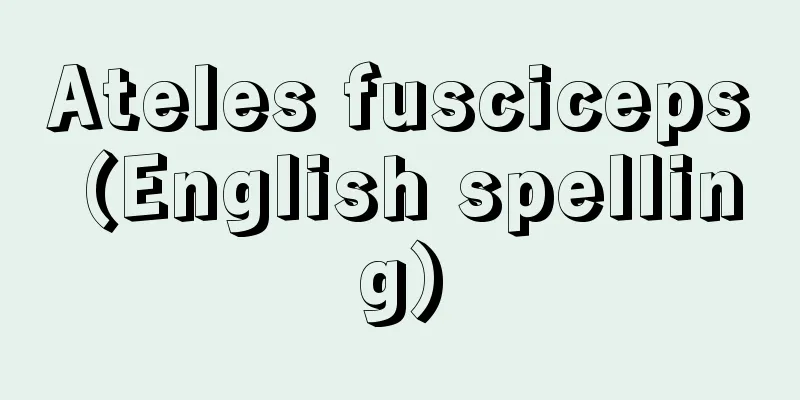
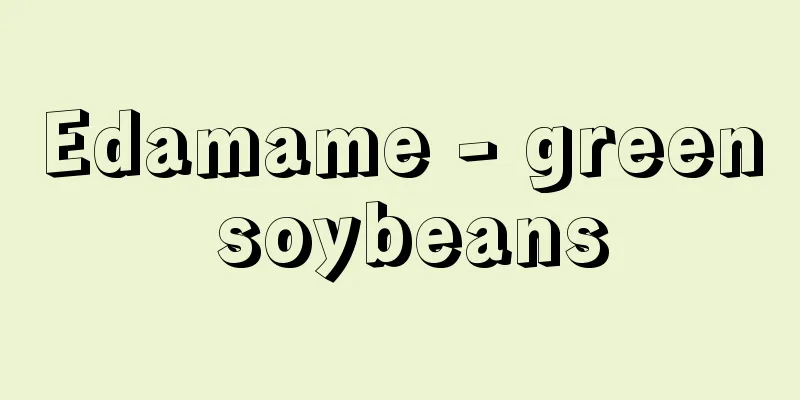
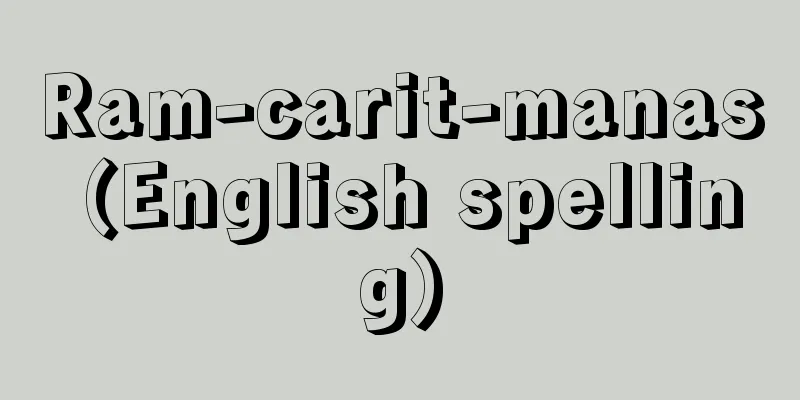

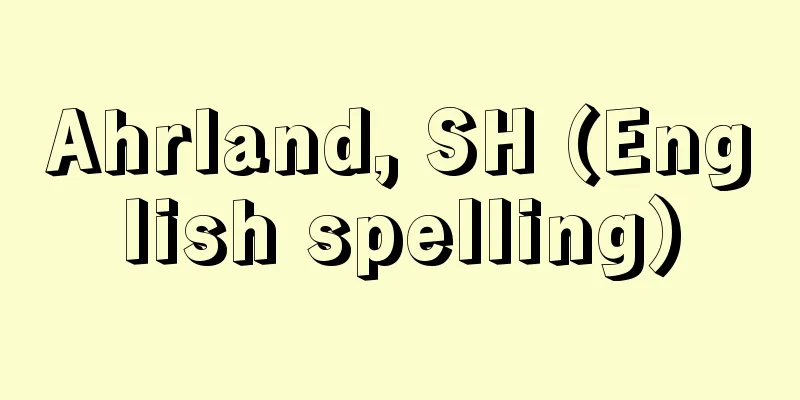


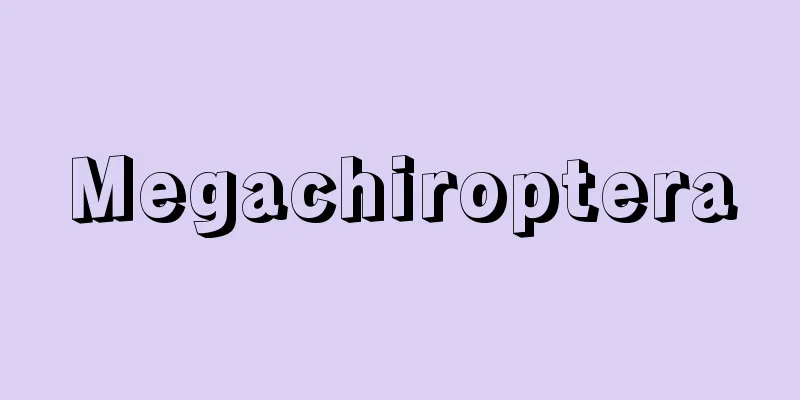

![Kitaibaraki [city] - Kitaibaraki](/upload/images/67cb52f688390.webp)